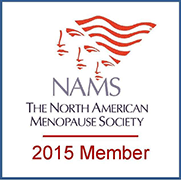Health Issues
Physical activity at any age has many proven benefits such as building strong bones, muscles, and increasing bone mass. Regular exercise can help reduce risk of developing osteoporosis, prevent further bone loss, and reduce the risk of a fracture. Several studies have shown that regular exercise can improve bone mineral density, balance and co-ordination, and reduce the risk of falls.(3,4,5)
People at risk for or those who have been diagnosed with osteoporosis should focus on exercise routines which increase strength, co- ordination, balance, and flexibility.(6,7)
Building Bone Mass
The greatest impact on bone mineral density can be achieved by performing weight bearing and resistance exercises
Weight Bearing
Weight bearing exercise focuses on having our body weight carried by the legs and feet; this in turn challenges the bones and helps to build bone mineral density.(1,8) There are two forms of weight bearing exercises (high and low impact).
High impact weight bearing is considered appropriate for someone who does not have low bone mass or osteoporosis.(2)
Examples of high impact weight bearing exercises include walking, jogging, high impact aerobics, dancing, stair climbing, jumping rope, and skating.(2, 9)
Low impact weight bearing exercises are advisable for people who can not do high impact exercises and need to build up their bone mass.2 Examples of low impact weight bearing exercises include: walking, low impact aerobics, and stair-stepping machines.(2)
Building Resistance
Incorporating balance and co-ordination exercises into your workout regimen can help reduce risk of falls and fractures. These exercises are designed to strengthen your legs and challenge your balance. Examples of routines that incorporate the use of balance include Tai Chi and dancing.(2)
Posture Exercises
Posture exercises are designed to improve the posture to help reduce the risk of fractures (especially in the spine). Fractures in the spine can result in “loss of height, rounding of the back and shoulder pain”.9 The National Osteoporosis Foundation has recommended exer- cises such as yoga or Pilates to strengthen and improve posture.(2) *Please Note: people with osteoporosis or low bone density should avoid certain positions which place the spine in a flexed position increasing the risk for a fracture. These include forward-bending exercises. A physical therapist should be able to help you learn which exercises are safe and appropriate for you.(1, 2, 5,)
•Check with your healthcare provider before starting any osteoporosis exercise program.
•Physical therapists are a great resource for evaluating if an exercise program is safe and meets the needs of individuals.
•Don’t do exercises that cause pain.
•Stretch before and after exercise.
•Choose a facility, leader or trainer who knows the exercise restrictions associated with osteoporosis.
Created by Mia Kubrak for The Women’s Midlife Health Program
Nursing Education Program of Saskatchewan
January 2010
Reference:
1 Osteoporosis Society of Canada (2003). Osteoporosis update a practical guide for Canadian physicians. Retrieved January 13, 2010 from www.osteoporosis.ca/local/files/health_professionals/pdfs/osteoupdate_special_e.pdf
2 National Osteoporosis Foundation (2008). Exercise for healthy bones. Retrieved January 11, 2010 from http://www.nof.org/preven- tion/exercise.htm
3 Berry, D., Kiel, D.P., Donaldson, M.G., Cummings, S.R., Kanis, J.A., Johansson, H., Samelson, E.J. (2010). Application of the national osteoporosis foundation guidelines to postmenopausal women and men: the Framingham osteoporosis study. Osteoporosis International, 21(1), p.53-60.
4 Iwamoto, J., Yoshihiro, S., Tsuyoshi, T., Matsumoto, H. (2009). Role of sport and exercise in the maintenance of female bone health. Journal of Bone Mineral Metabolism, 27 (5), p.530-537.
5 Warburton, D. E. R., Nicol, C. W., Bredin, S.D. (2006). Health benefits of physical activity: the evidence. Canadian Medical Association Journal, 174 (6), p. 801-809.
6 Brown, J.P., Josse, R.G. (2002). 2002 clinical practice guidelines for the diagnosis and management of osteoporosis in Canada. Cana- dian Medical Association Journal, 167 (10), p. S1-S34.
7 National Institute of Health Osteoporosis and Related Bone Diseases’ National Resource Center (2009). Once Is Enough: A Guide to Preventing Future Fractures. Retrieved January 13, 2010 from
www.niams.nih.gov/Health_Info/Bone/Osteoporosis/Fracture/default.asp
8 Ozgurbuz, C. (2003). Osteoporosis and physical activity. Turkish Journal of Endocrinology and Metabolism, 3, p.101-105. 9 Osteoporosis Canada (2009). Physical activity and osteoporosis. Retrieved January 13, 2010 from http://www.osteoporosis.ca/index. php/ci_id/7037/la_id/1.htm-osteo
Improving Women's Lives Through Better Health in Mid-Life and Beyond


